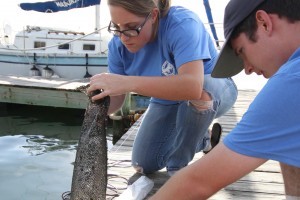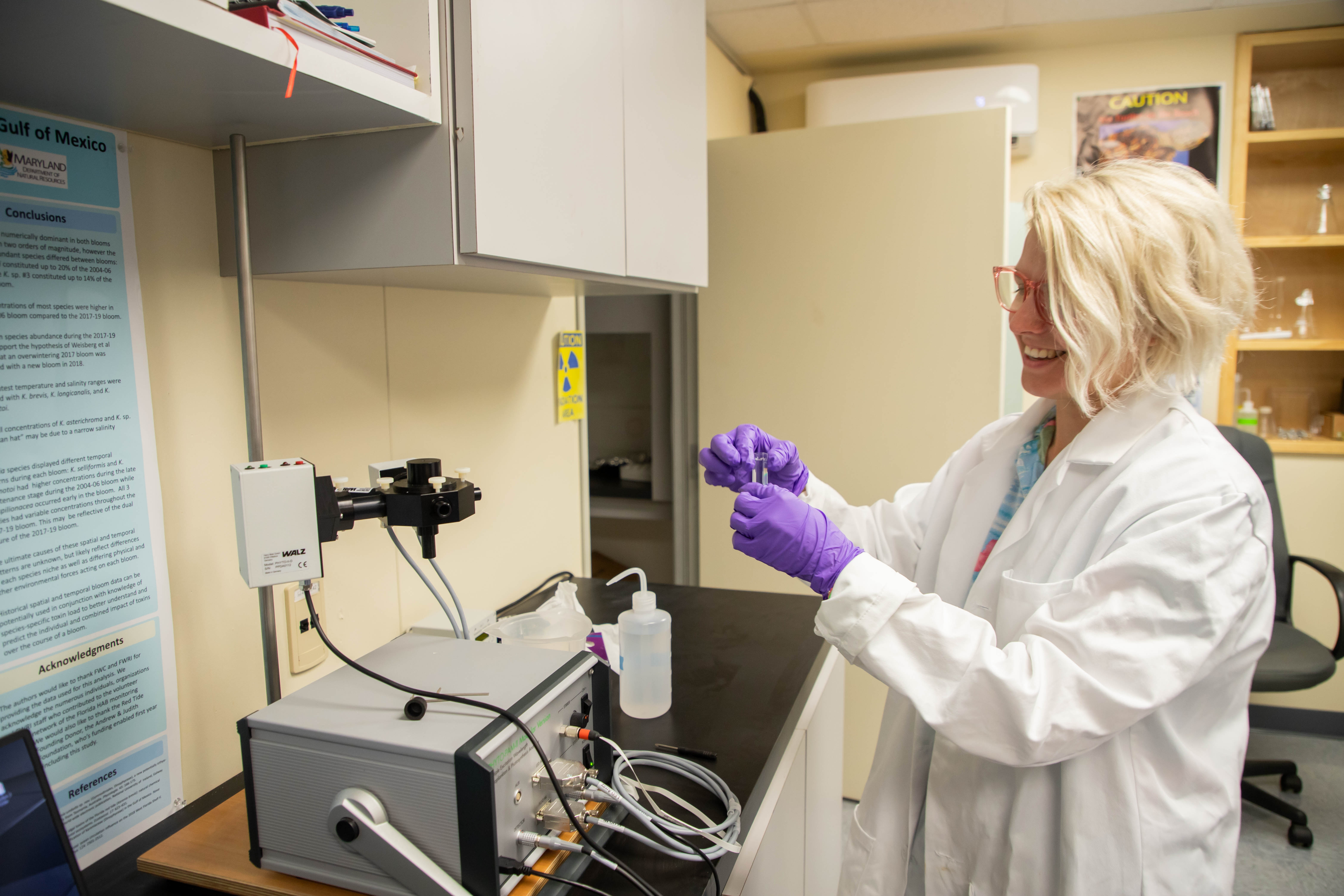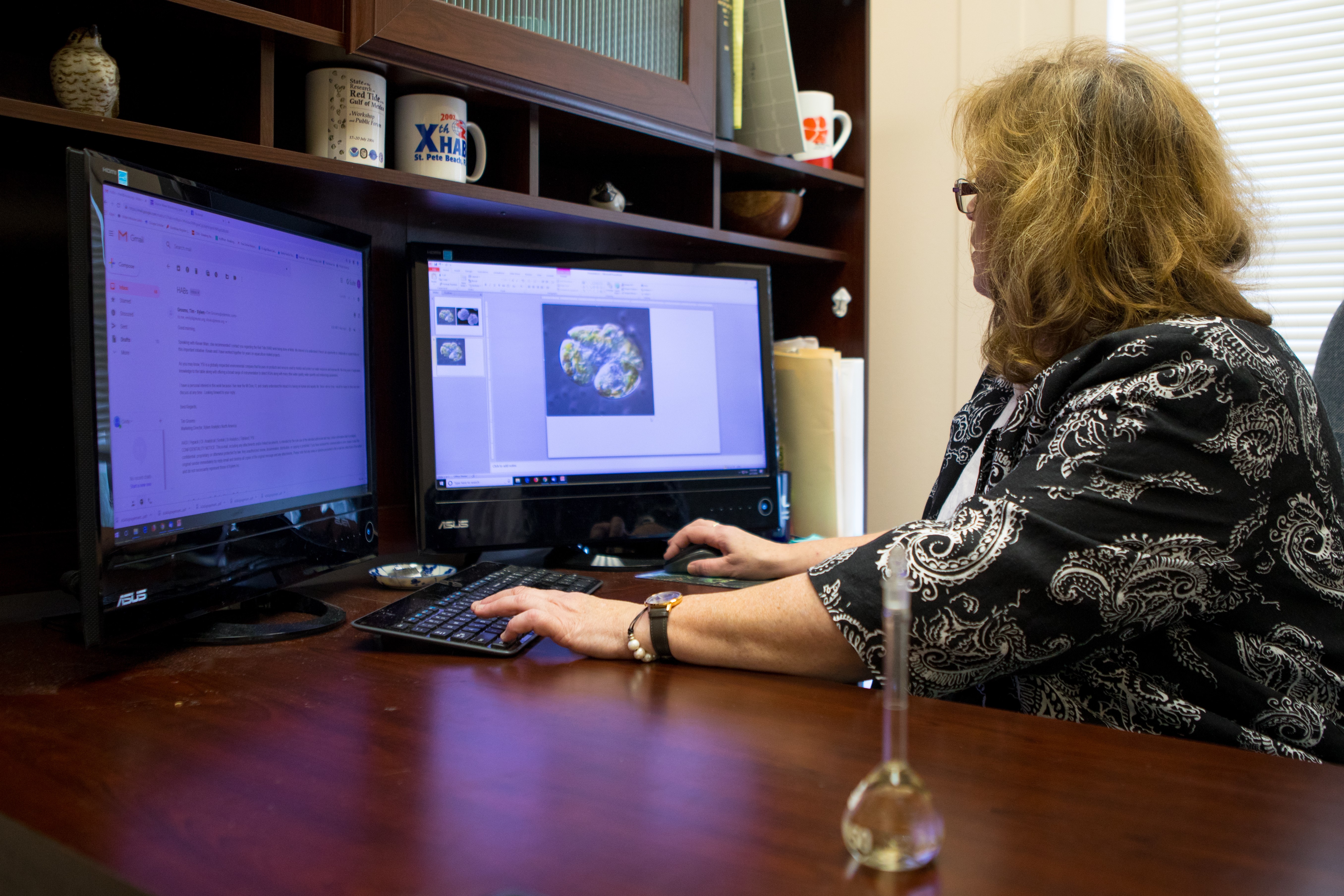
Benthic Ecology
Bottom-dwelling organism response to environmental disturbance.
1600 Ken Thompson Parkway
Sarasota, FL 34236
Ph: (941) 388-4441
Hours: 10AM - 5PM
A 501(c)3 nonprofit organization.
Florida red tides — harmful algal blooms (HAB) of the toxic microscopic alga Karenia brevis—are ecologically complex and intensely challenging for communities along the Gulf of Mexico coast. Karenia brevis produces potent neurotoxins that can kill fish and other wildlife and cause beachgoers to cough and sneeze, sometimes landing people with chronic respiratory conditions in the emergency room. While K. brevis is native to the Gulf of Mexico and unlikely to disappear entirely, there is significant demand and potential to use science-based control and mitigation techniques to reduce its impacts.

The Red Tide Institute at Mote Marine Laboratory was established in 2018 with the following mission: Reducing adverse impacts of Florida red tide on public health, coastal marine ecosystems and Florida’s economy via the rigorous testing and application of a “tool box” of science-based mitigation and control technologies and strategies.
Scientists at the Institute study chemical, physical and biological tools that may potentially destroy the algae and their toxins directly or may shield people and/or wildlife from bloom impacts. We assess each potential mitigation compound or control tool systematically and scientifically, beginning with laboratory studies on effects on K. brevis cells and toxins in culture, and if successful, scale up to “mesocosm” studies in large, outdoor aquaria to better understand environmental effects and logistical challenges of compounds and tools that have been proven successful in laboratory experiments. Technologies that perform effectively in mesocosm systems graduate to field and pilot studies conducted with appropriate federal and state permits.

We emphasize that effective mitigation or control strategies must do no further harm to our ocean ecosystems and natural resources, beyond the harm already done by the red tide bloom. Additionally, the successful application of these compounds and technologies depends upon our knowledge of when and how best to apply them. At the time our Institute launched, no control or mitigation strategy for Florida red tide had yet been proven both effective and environmentally safe. Mote and its partners are working to change that, drawing upon Mote’s strong, existing foundation of red tide monitoring and mitigation research.

The Red Tide Institute was established through the support of its Founding Donor, the Andrew & Judith Economos Foundation, which provided essential funding for its first year of operations. Additional significant support from The Charles & Margery Barancik Foundation for the Institute’s Director is helping to ensure consistent progress. Securing additional philanthropic support is vital for the Institute to continue and expand its important work.
With its emphasis on direct mitigation and control, the Red Tide Institute complements multiple other Mote research programs focused on red tide ecology, biology, nutrients and water quality, ecotoxicology, ocean sensing technology, environmental health and public information, and more. Mote red tide scientists also collaborate within a vast network of red tide local, state, regional and federal research partners whose specialties include red tide monitoring, management, physical oceanography, public health protection, forecasting and other complementary efforts.